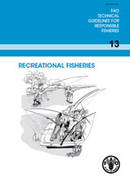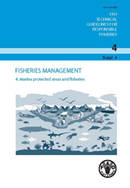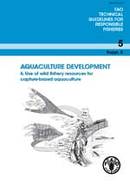Publications
The document compiles the scientific information collected by the experts for the Joint FAO/IOC/WHO ad hoc Expert Consultation on biotoxins in bivalve molluscs held in Oslo, Norway, 26–30 September 2004 to answer the request of scientific advice expressed by the Codex Committee for Fish and Fishery Products (CCFFP). In order to satisfy the many requests received by FAO to disseminate the information collected over these years since 2004, the data and information available were edited...
Recreational fishing is defined as fishing of aquatic animals (mainly fish) that do not constitute the individual's primary resource to meet basic nutritional needs and are not generally sold or otherwise traded on export, domestic or black markets. Recreational fishing constitutes the dominant use of wild fish stocks in all freshwaters of industrialized countries, and it is prominent in many coastal ecosystems. The importance of recreational fisheries is increasing rapidly in many transitional economies. The...
This document on Marine protected areas (MPAs) and fisheries has been developed to provide information and guidance on the use of marine protected areas (MPAs) in the context of fisheries. As MPA implementation moves ahead in the arena of marine biodiversity conservation, many people feel that the fisheries aspects are not fully understood nor always appropriately taken into account, and that guidance specific to this sector is needed. These Guidelines look specifically at fisheries features of MPAs,...
The aquaculture of commercially valuable fish and invertebrate species is growing rapidly worldwide and has become a critically important additional means of production of freshwater and seafood at a time when many natural populations are declining in the wild. Capture-based aquaculture (CBA) is defined as the practice of collecting live material from the wild and its use under aquaculture conditions. It makes a significant contribution to aquatic production and livelihood generation. It encompasses a range...
These technical guidelines on the use of wild fish as feed in aquaculture have been developed in support of Article 7 (responsible fisheries management) and Article 9 (aquaculture development) of the FAO Code of Conduct for Responsible Fisheries, and in particular in support of Articles 9.1.3, 9.1.4 and 9.4.3. The objectives of the guidelines are to contribute towards the development of aquaculture and the sustainable utilization of feed-fish stocks. The guidelines cover a number of...






